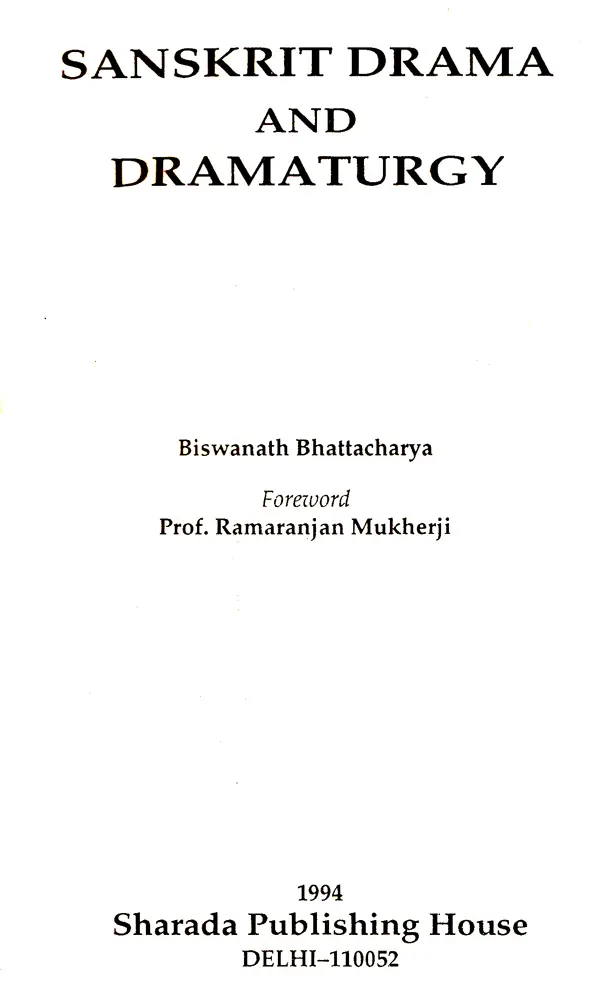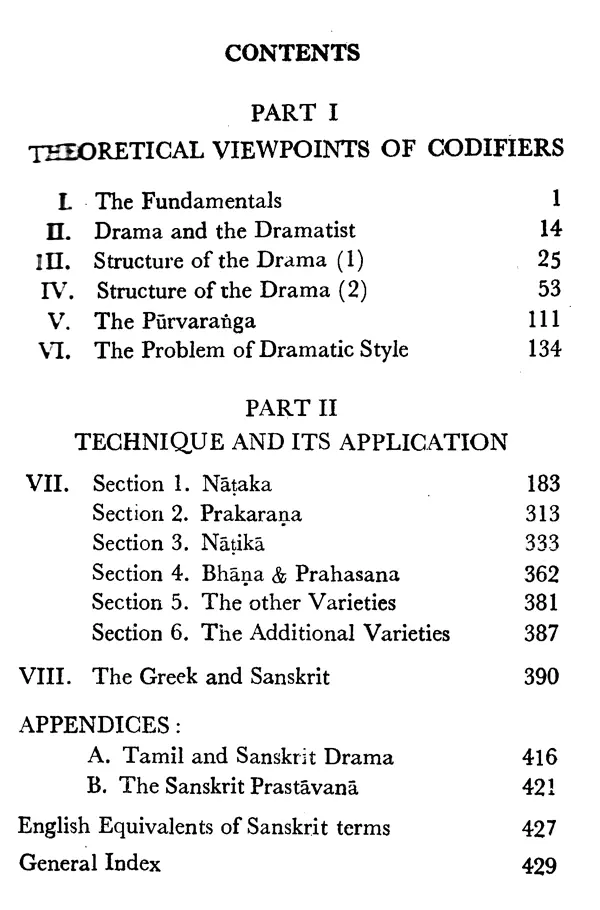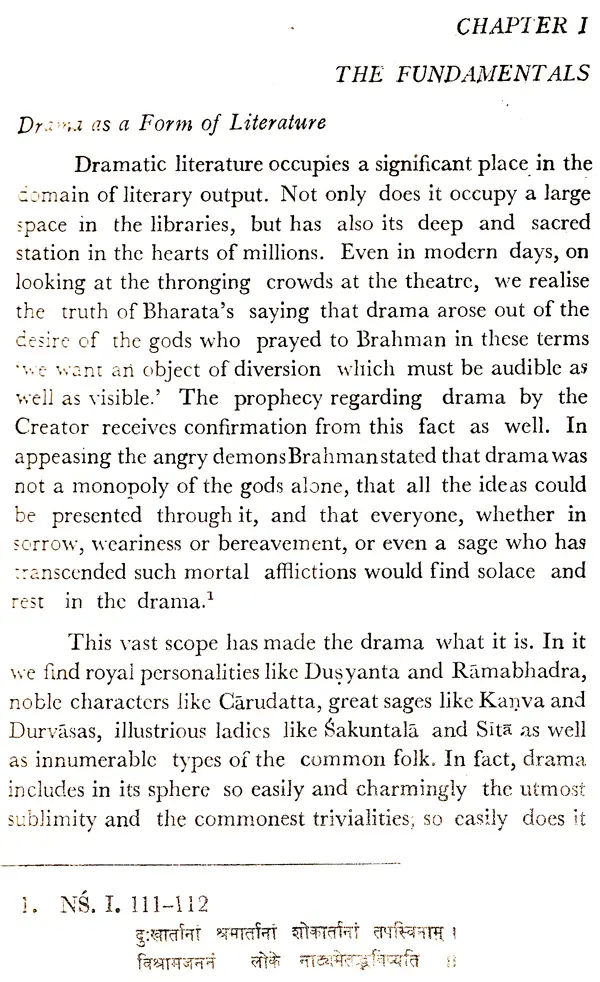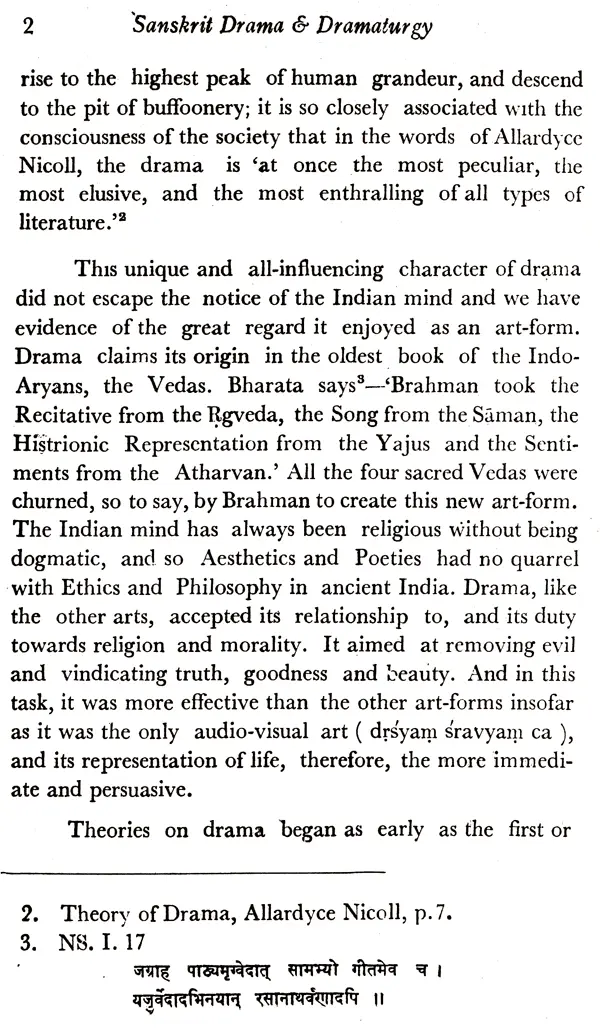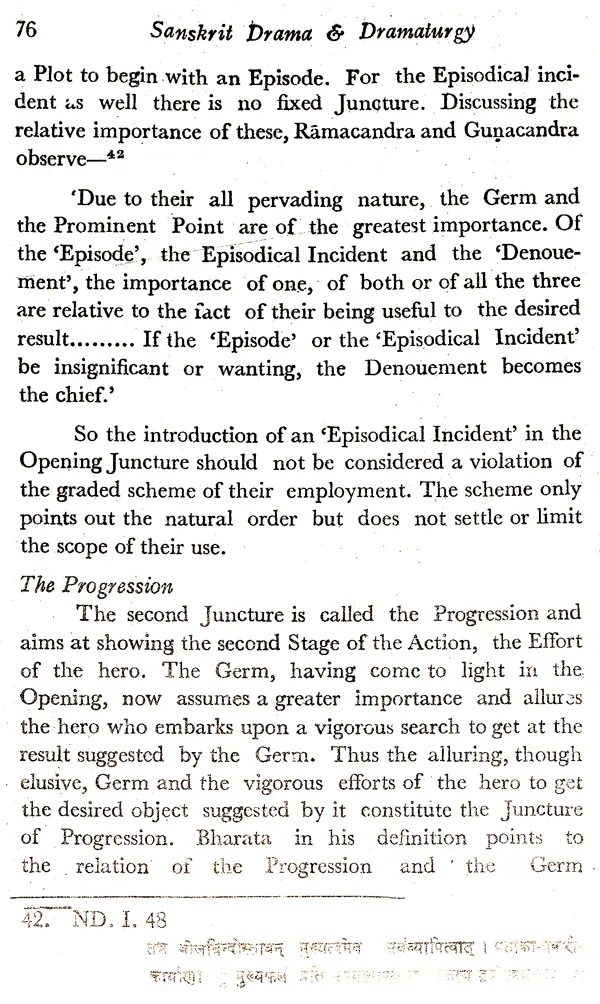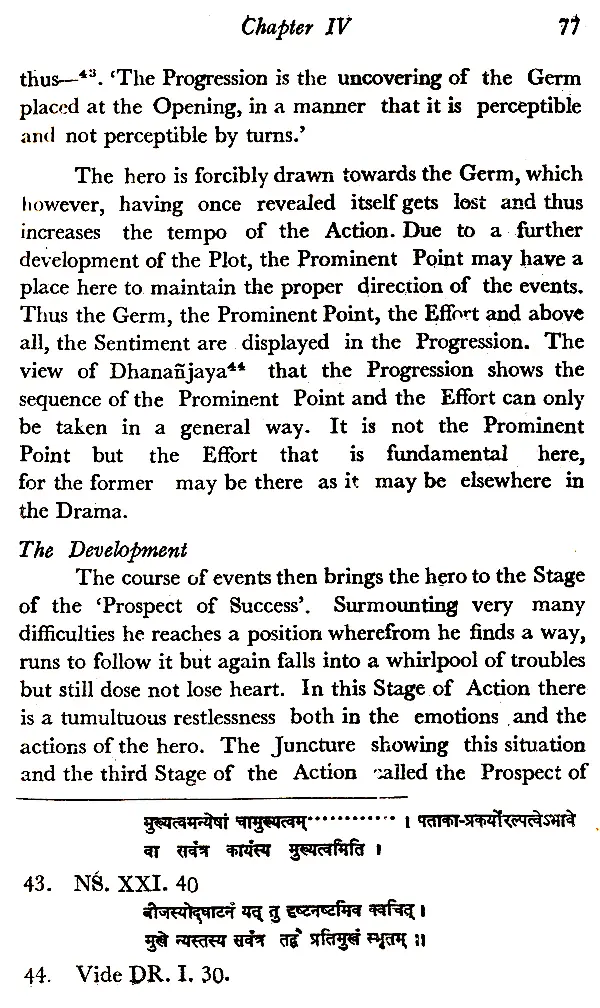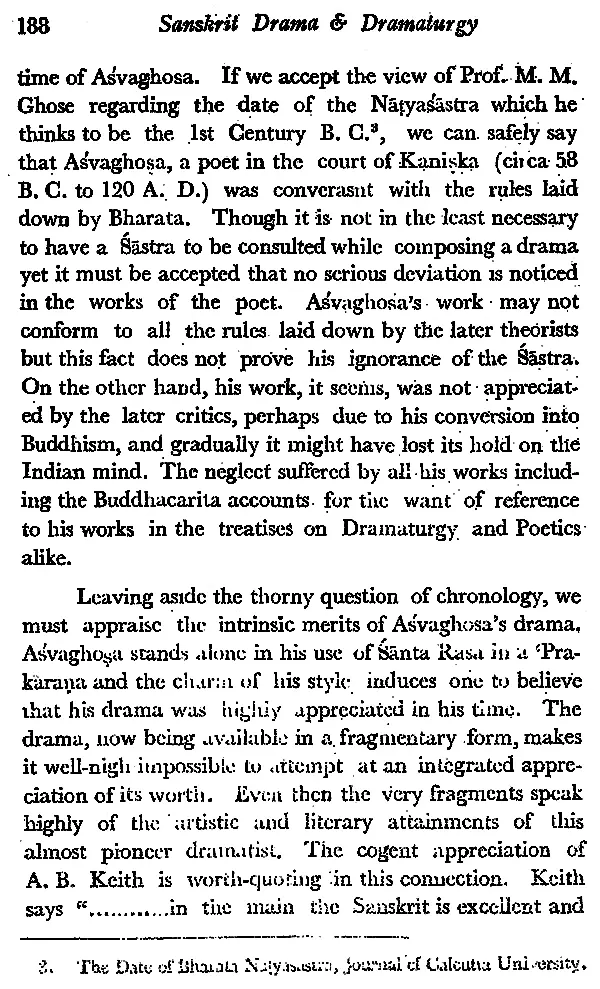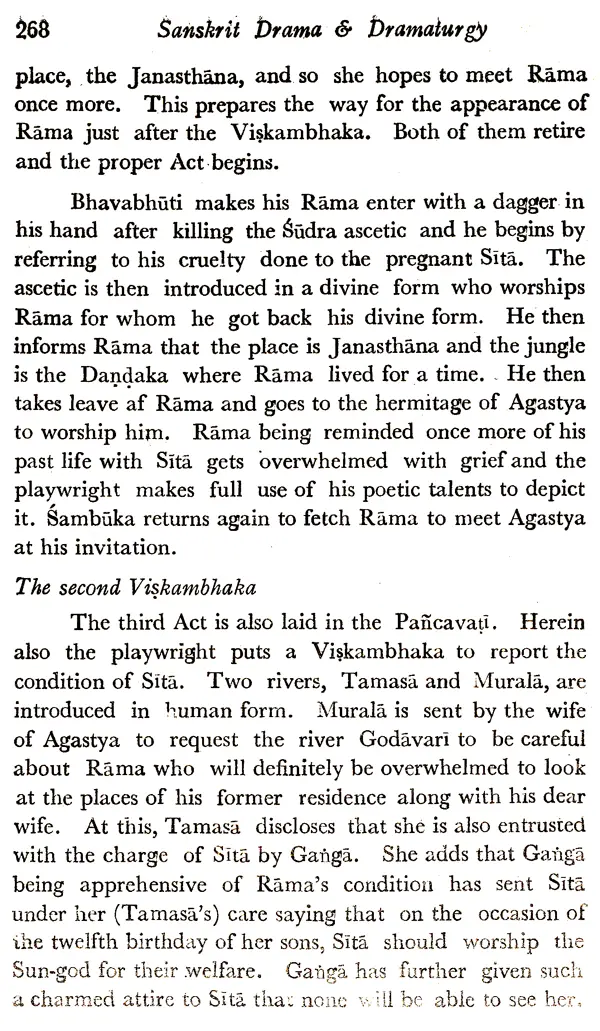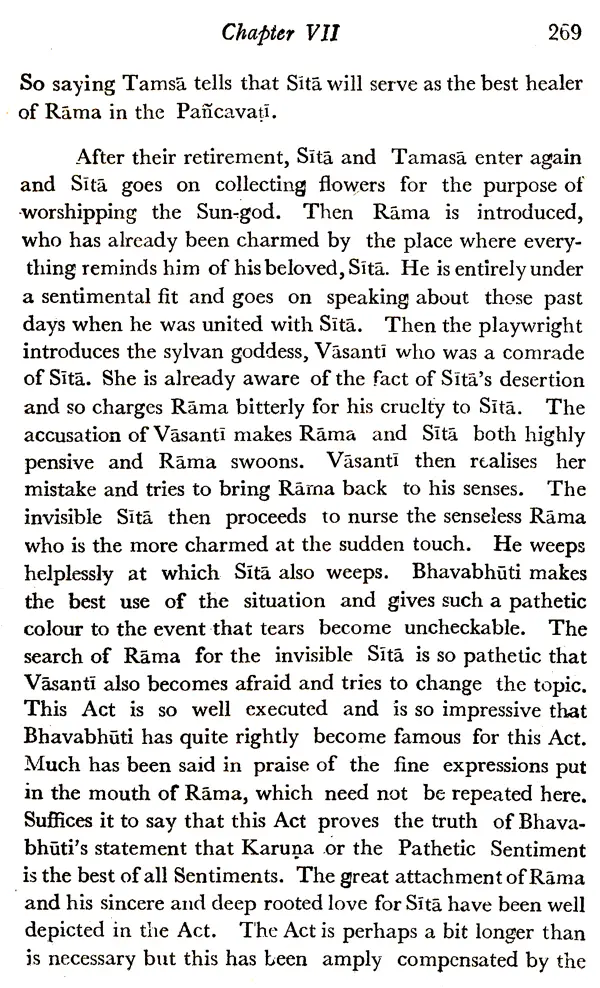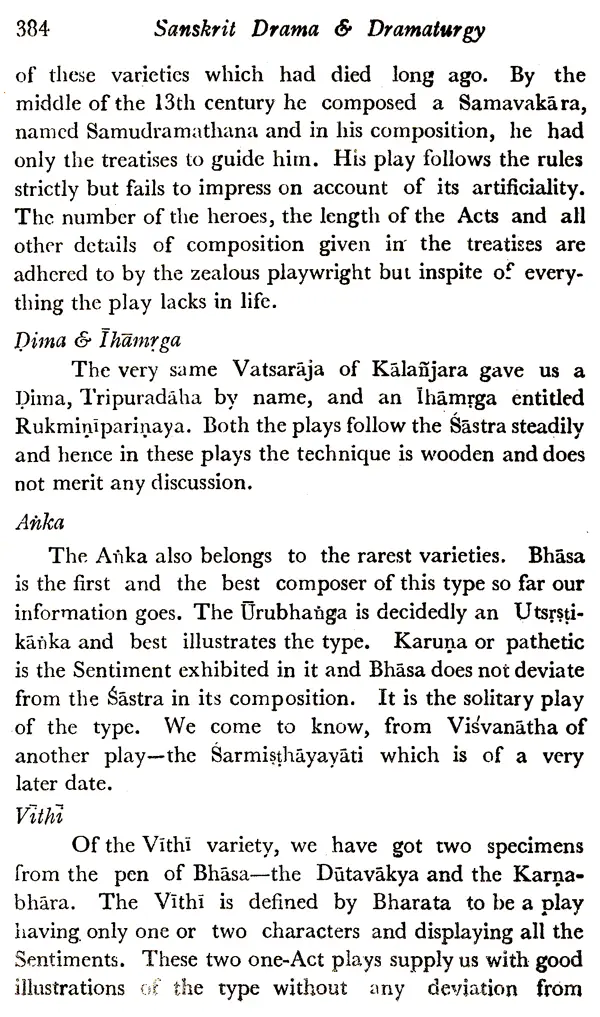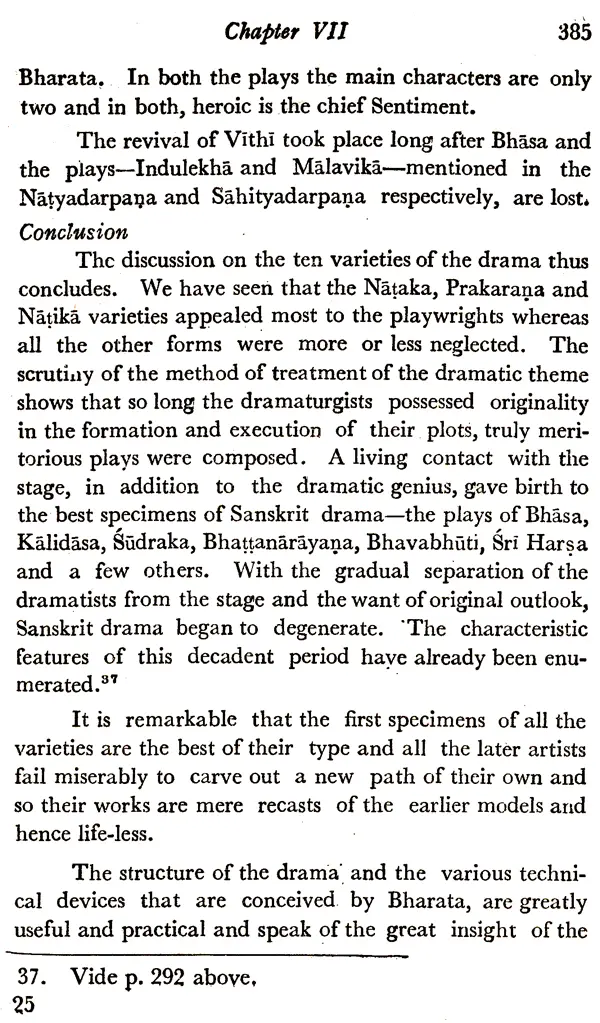
Sanskrit Drama And Dramaturgy
Book Specification
| Item Code: | UAG260 |
| Author: | Biswanath Bhatacharya |
| Publisher: | Sharada Publishing House, Delhi |
| Language: | English |
| Edition: | 1994 |
| ISBN: | 8185616302 |
| Pages: | 434 |
| Cover: | HARDCOVER |
| Other Details | 9.00 X 6.00 inch |
| Weight | 610 gm |
Book Description
Sanskrit Poetry is traditionally divided into two types, viz. that which is capable of being presented on board and that which is capable of being read out and heard. The first type springs from the role played by visual effect in appreciation of a specimen of Poetic Art and is called "Drama". Sanskrit Dramaturgy is required to analyze in data is the plot and its divisions in a drama and the different stages in its development. It is also required to analyze the different techniques of acting that are to be employed for presentation of different types of plays, projecting diverse pre-dominant emotional moods.
Professor Biswanath Bhattacharya is a profound scholar of Sanskrit and Bengali Literatures and an original thinker in the field of Sanskrit Poetics and Dramaturgy. He has studied Sanskrit Literature and Poetics from both the traditional and modern systems. He is one of the senior professors of Sanskrit in the Banaras Hindu University.
The present work embodies, in the main, the author's research on the evolution of dramatic technique, on the basis of works on dramaturgy in Sanskrit and its application by the playwrights. The period covered stretches from the antiquity and ends with circa thirteenth century A. D. which may conclusively be taken as the period marked by decadence, the process of which had already set in.
Indian Dramaturgy has a long history of its own: it begins from the speculations of Bharata, the author of the great Natyasastra and winding its course though the thought-currents of many exponents of Dramaturgy finally receives a beautiful treatment at the hands of Visvanatha, the author of the most popular treatise on Poetics, entitled 'Sahityadarpana'. Since Indian literary theory considers Emotion as the centre of gravity of all literary arts, and believes in the principle that, for the presentation of Emotion the literary artists are required to take care of the excitant and the ensuent, the permanent feeling and the accessories, without the assistance of which the central feeling cannot be communicated and a platform for the grand confrontation between the universalized subject and the generalized object of experience cannot be constructed. The duty of the literary artists, therefore, is to construct poetical paintings, competent to introduce to the connoisseur the generalized excitant and ensuing, as also the universalized permanent and transient moods. It is to signify these factors that are responsible for attainment of Aesthetic Experience that the expression "Objective Co-relative" has been employed by no less a critic than T.S. Eliot, the most profound literary artist-cum-critic of the twentieth century.
**Contents and Sample Pages**
